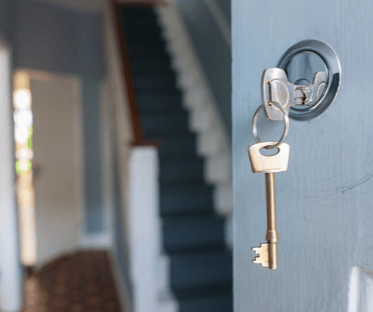Renting vs. Buying
Weighing the rent-versus-buy decision? Both have upsides and drawbacks. Ultimately...
Getting informed before you start the homebuying process empowers you to make savvier financial decisions. For instance, once your understand how your credit score affects the cost of your mortgage, you might decide to wait six months or a year before buying so you can get a better rate.
In addition to timing your purchase, our Homebuying Guide will teach you how to save for a house, how to boost your credit score, and how much house you can really afford. Once you’re informed and educated, you’ll be empowered to move on to the next step in the homebuying process—finding your dream home.
As you explore the Homebuying Guide, you can bookmark the content that matters to you. You can also create a personalized Bankrate account for even more tools, tips and in-depth financial resources.

Weighing the rent-versus-buy decision? Both have upsides and drawbacks. Ultimately...
Homeownership is a dream come true for many people. In fact, approximately...
When you apply for a mortgage, your credit score is one of the top factors that impacts...
When you apply for a mortgage, your credit score is one of the top factors that impacts...
Finding a house you like in the right neighborhood is just the beginning. If you’re like most people, you’re going to need a mortgage—a loan to help you buy the house now and pay for it over time. Once you find a house you’re interested in, you’ll work with a lender to get a mortgage with a rate and monthly payment you can afford.
There’s a lot you can do to increase your chances of getting approved for a mortgage, and to make sure you get favorable terms. By getting pre-approved for a mortgage with a specific lender, you’ll stand out to potential buyers and increase your chances of your offer being accepted.
In addition to getting pre-approved, this section of our Homebuying Guide will show you how much house you can afford, which questions lenders are likely to ask you, and common mortgage mistakes you should avoid.
To get started, choose an article below.

Shopping for a home before getting preapproved for a mortgage is the equivalent...
What you don't know can hurt you — especially when shopping for a mortgage...
Mortgage applications can be time-consuming and tedious because after all, there’s a lot...
Once you've found a home you're interested in and learned about pre-approvals, it's time to shop for a mortgage. The overall cost of your mortgage — and how much you'll pay each month — will depend on your credit, your down payment, and the interest rate you get.
You'll want to put as much money down as possible in order to lower the overall cost of your mortgage. The less you have to borrow, the less you'll pay in interest over the life of the loan. It’s also important to shop around for the best mortgage rates, which can change depending on market trends and your location.
In this section of our Homebuying Guide, you'll calculate your monthly mortgage payment, compare up-to-the-minute rates, and see how your down payment impacts the overall cost of your loan.
To get started, choose an article below.

Compare mortgage rates from lenders
Calculate your monthly mortgage payment
The down payment is money you give to the home’s seller. The rest of the payment to the...
When you take out a mortgage, whether you’re buying a house or refinancing an existing...
You've found a house you love in the perfect neighborhood, plus a great lender and a great mortgage rate. Now, it's time to make an offer.
In the same way that you compared different lenders for the best rates, you'll also want to negotiate during the offer process. One way to save is by negotiating closing costs. These costs can range from 2-5% of the total home price, and include things like home inspection fees, appraisal fees, insurance costs and more.
The seller can potentially pay any or all closing costs. If you don’t have enough cash on hand, you could negotiate a higher purchase price in exchange for the seller paying closing costs.
In addition to closing costs, this section of our Homebuying Guide also shows you how to make your offer stand out from the crowd, what to expect at closing, what you need to know about escrow and insurance.

If you've signed a contract to purchase a home, a key step before completing...
Closing costs are fees charged by the lender at the closing of a real estate transaction…
As home prices rise and the inventory of homes for sale shrinks, homebuyers...
Closing day is an exciting event for homebuyers. If everything goes smoothly...
After all that hard work, the big day is finally here—you're ready to move into your dream home! This section of our Homebuying Guide will show you what to do once you're moved in. We'll also share money-saving tips that will help you build equity and pay off your house faster.
Prepaying your mortgage is one way to do just that. By paying a few dollars more each month, making a 13th payment each year, or using an inheritance or lump sum toward your mortgage, you can save thousands over the life of the loan. Extra payments help you build equity faster and even pay off your mortgage ahead of schedule.
In this section, you'll also learn how and when to remove private mortgage insurance (PMI) if you purchased it, and how to avoid foreclosure.

When you prepay your mortgage, it means that you make extra payments...
If you bought a house and made a down payment of less than 20 percent, the lender required…
Most people who sign a mortgage don’t intend to walk away from it. Still, unforeseen…